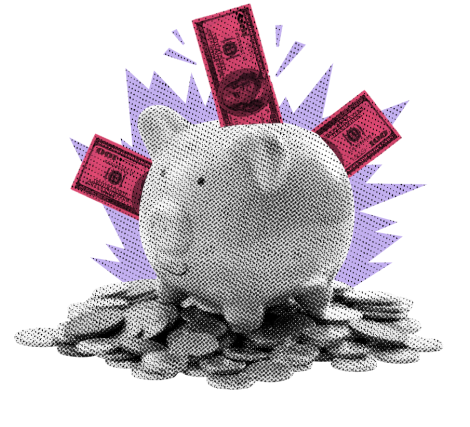
Don’t wait for a recession label—by the time it’s official, it’s already too late.
KEY TAKEAWAYS
- LEI was created in the 1930s to anticipate economic downturns
- March’s LEI fell -0.7%, worse than February and below expectations
- Declines were driven by S&P 500, new orders, and consumer sentiment
- LEI has historically predicted 7 of the last 8 recessions
- Recession labels come too late—investors need to act on the drivers
MY HOT TAKES
- Recession labels are lagging and nearly useless for planning
- LEI is underrated but still powerful as a forecasting tool
- Economic signals are deteriorating faster than many think
- Investors should focus on root causes, not just market moves
- “All ships sink with the tide”—but the winners resurface fastest
- You can quote me: “You will know a recession when you see one—that is to say, by the time we hear the U.S. economy is in a 'recession,' we are already hip-deep in trouble.”
Labels. Way back in the 1930s, someone had the notion of creating an indicator that might flash early warning signs of trouble for the US economy–a smoke detector of sorts. That early work was done at the venerable National Bureau of Economics Research (NBER), the folks in charge of officially labeling recessions… recessions. On that note, I would like to say that you will know a recession when you see one. That is to say by the time we hear that the US economy is in a “recession,” we are generally already hip-deep in trouble (a nice way of saying 💩). So, the label is kind of useless for planning purposes if you are a company, consumer, investor, or policymaker.
A bunch of statistics wizards looked at all the available economic data and ran some sort of stepwise regression to see which, if any of those independent variables explain deviations in dependent variable, which is GDP contraction, AKA recession. Now, in the 1930s data was not as readily available as it is today. It was stored on… er, paper, and calculating OLS regressions required… um math skills. But they managed to find some data sets that might actually be leading indicators of recession. Thus, was born the Leading Economic Indicator. For a brief period thereafter, the index was calculated by the Bureau of Labor Statistics (BLS), but it was ultimately privatized to the Conference Board, which remains its steward until today. The Conference Board is most well-known for its Consumer Confidence indicator, which I often refer to in my writings. Don’t worry, I am not going to go on a rant about consumption today.
Back when I started on Wall Street, we used to refer to this data series as simply LEI. Using the acronym was a bit more formal and it carried an ominous air to it. When the LEI said, “exit the building”, it was TIME to exit the building. While it is still closely and broadly watched today, it has lost some of its luster, most likely because nerdy quants like me 🤓 can calculate more complex and accurate indicators using my laptop, but that said, the series is still quite valid and often quoted by politicians, who are, sadly, in charge of spending our tax dollars. So, let’s not miss this sleepy number. Here is the headline. Yesterday, the Conference Board announced that LEI for March slipped by -0.7%, below expectations, and lower than February's revised -0.2% decline. If you simply ignore the number and note that there are minus signs in front of the indicators, and that they are trending down, it is enough to know that conditions are deteriorating and that they have worsened.
I know you, and you want to know more, which is why we are friends.😁 Ok, deep breath, the indicator tracks the following key components,
- Average weekly hours in manufacturing
- Average weekly Initial Jobless Claims
- Manufacturers’ new orders for consumer goods and materials
- The Institute for Supply Management (ISM) Index of New Orders
- Manufacturers’ new orders for nondefense capital goods excluding aircraft
- Building permits for new private housing units
- The S&P 500 Index
- The Leading Credit Index
- The spread between 10‑year Treasury yields and the federal funds rate
- Average consumer expectations for business conditions
Have a quick look at this beautiful ECAN chart from Bloomberg to get an idea of these components and their behavior over the past 5 years.

The white line is the actual Leading Economic Index. You will note that conditions were declining more rapidly during 2022 through late 2023, which makes sense given that the Fed was intentionally trying to slow the economy to fight inflation. You can also see how conditions improved and peaked in November of 2024 but declined rapidly since the start of 2025. Are you surprised yet? You probably can’t see it clearly, but I will tell you that a big contributor to this most recent decline was the S&P 500 performance. Which should also not shock you. The other two notable decreases come from declines in new orders and a pullback in consumer expectations. These should also not shock you given current conditions. Essentially this index brings together lots of themes that we discuss often when taking the temperature of the economy. So how accurate is this model in predicting future recession? Have a look at this next chart then follow me to the finish.

Now, just by eyeballing this chart, it should be clear to you that indeed the LEI (blue solid line) decayed prior to 7 out of 8 recessions (red shaded areas) that have occurred since this current version of the index has been in existence. That’s not a bad track record.
So, does this mean that we are headed for a recession? Well, sadly, it is too early to tell. Also, you should have noted that indeed, many of the factors that have contributed to this most recent downtrend can change. A nice rally in the stock market, manufacturers increasing orders, consumer sentiment. These have all been under pressure throughout this recent market regime which has been dominated by tariff turmoil. Take that statement as far as you would like.
One last word on recessions. As I implied above, the word “recession” is just a word. It describes current economic conditions with an emphasis on “current.” As an investor it is important not to get caught up in words like that, but it is important to recognize what is causing the economy to contract and what impact each of those factors can have on your portfolio companies. Well, we know that markets decline in recessions and that, for the most part, all ships sink with the ebbing tide (systematic risk). But the cause, intensity, and length of the recession determine which of your ships will rise fastest when the tide flows back in (idiosyncratic risk). It is a sleepy number, but you should probably stay awake and alert and pay attention to it.
YESTERDAY’S MARKETS
Stocks had a rough session yesterday, closing deeply in the red, after an extended weekend which gave traders an additional day to marinate in the idea of a non-independent Fed–nerves were exposed. The Leading Economic Index slipped further than expected which should be no surprise, though that didn’t make it easier for traders to digest. The Dollar took a drubbing, and 10-year Treasury Note yields climbed in response to Trump’s negative gestures toward the Fed Chairman.

NEXT UP
- Richmond Fed Manufacturing Index (April) may have slipped to -7 from -4.
- It’s a Fedspeak parade: Jefferson, Harker, Kashkari, Barkin, and Kugler.
- Important earnings to watch today: Synchrony Financial, Elevance Health, Equifax, GE, PulteGroup, Verizon Communications, Genuine Parts, 3M, Danaher, Kimberly-Clark, RTX, Quest Diagnostics, Halliburton, Northrop Grumman, Lockheed Martin, Capital One, Tesla, Enphase Energy, Manhattan Associates, Baker Hughes, Intuitive Surgical, and Steel Dynamics.
.png)

